Specialty Coffee Beans Lists
-
What are the characteristics of Ugandan coffee | introduction to Ugandan coffee producing areas and flavor characteristics
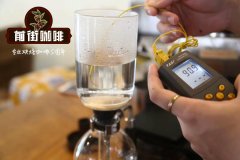
Most of the coffee grown in Uganda (80 per cent) comes from the variety Coffea canephora var.robusta, while the remaining 20 per cent includes Arabic varieties such as Typica,SL 14 and SL 28 and Kent. The Arabica variety Bugishu / Bugisu (Arabica coffee variety bugishu) is also grown in Uganda, which grows near Sipi Falls on the Shanxi slope.
2020-04-24 Uganda coffee what characteristics producing areas flavor introduction species -
Introduction of Tarim é Coffee producing area in Tanzania | how about Tarime coffee

Tarime is located in a small producing area near Kenya in the northernmost part of Tanzania. Tarim é and its surrounding areas are not as famous as the famous coffee-growing areas near Mount Kilimanjaro and Arusha, nor are they famous for the rise of coffee-growing areas in the south (Mbeya and Mbinga). In addition, the area is located between the Masai Mara National Reserve and Lake Victoria, and its disadvantage is the distance between
2020-04-24 Tanzania Tali coffee producing area introduction Tarime how about -
What are the characteristics of Mbeya coffee in Mbeya, Tanzania?

In southern Tanzania, between Lake Tannika in the north and Lake Malawi in the south, we found that Mbeya is the largest Arabica coffee producer in the five coffee-growing areas of Tanzania. Mbeya is divided into four sub-regions-Mbeya, Mbozi, Rungwe and Ileje. Coffee production itself is divided into three categories: small farmers
2020-04-24 Tanzania Baya producing area introduction Mbeya Coffee what characteristics -
Introduction of Ruvuma producing areas in Tanzania | what is the flavor of AA in Tanzania?
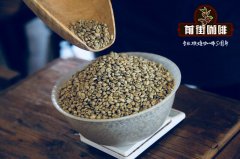
For many people, Tanzanian coffee is peaberry. Compared with other countries, raw beans in Tanzania may account for a higher proportion of total export crops. On the other hand, Tanzania also produces some very fine lentil (ordinary shape beans) coffee. We think the crops from the Ruvuma region clearly prove this. Ruvuma is west of Tanzania.
2020-04-24 Tanzania Ruvuma producing area introduction flavor how about -
Introduction to coffee producing areas in Arusha, Tanzania | introduction to Elewana Arusha Manor Coffee
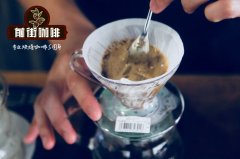
Just outside the town of Arusha, at the foot of Mount Mount Meru, not far away, large coffee plantations offer a completely different view of the hustle and bustle of Arusha. Fresh air, vast land and the sound of nature. The Elewana Arusha Coffee Lodge Hotel, located in the beautiful middle, is the oldest plantation since German colonization.
2020-04-24 Tanzania Arusha coffee producing area introduction Elewana Arus -
What kind of coffee beans is Peaberry | what are the flavor characteristics of Tanzanian Peaberry coffee

What kind of coffee bean is Peaberry? Peaberry coffee beans, also known as small round beans, come from a kind of coffee cherry, which means that coffee cherries grow only one core, rather than the common two kernels. Usually, 1% to 9% of any coffee crop is made up of small round beans, which are usually separated from other coffee beans and sold at a high price because of their unique taste.
2020-04-24 Peaberry what is it coffee beans Tanzania coffee what flavor -
Tanzania Kilimanjaro Coffee Introduction| Kilimanjaro Coffee vs Kenya AA Comparison

Tanzanian Kilimanjaro coffee is slightly lower in body and acidity than its close relative Kenyan AA coffee, but still presents very good body and brightness, as well as fine balance and a refreshing cup of coffee. Kilimanjaro coffee is also milder than Kenyan coffee, often presenting a smooth, velvety texture with a hint of blackcurrant.
2020-04-24 Tanzania Kili Mazar Ro Coffee Coffee Presentation Kenya Contrast -
Introduction to the characteristics of Tanzanian coffee | what's the difference between Tanzanian coffee and Kenyan coffee?

The Tanzanian coffee review is somewhat similar to Kenyan coffee, showing bright and vibrant acidity, sometimes even bright, with a rich, full-bodied and full-bodied taste. High-quality Tanzanian coffee usually has a medium to full-bodied, full-bodied and smooth taste, with sweet berry-like, fruity and sometimes cedar flavors. The main body of Tanzania
2020-04-24 Tanzania coffee characteristics introduction Kenya what difference -
Introduction to the characteristics of Bebeka producing area in Ethiopia | how about coffee in Bebeka producing area

The 93 square kilometer Bebeka coffee plantation, located 28 kilometers southwest of Mizan Tefari (an hour's drive), is the largest and oldest coffee farmer in Ethiopia.
2020-04-23 Ethiopia Beibei producing area characteristics introduction Bebeka coffee how -
Introduction to Guixia Village, Ethiopia| What kind of breed is Guixia Village and how to classify it
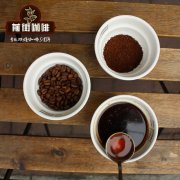
In Ethiopia's far west, just a few kilometres from the border with South Sudan, lies the dense jungle of Bench Maji. It is a place of breathtaking natural beauty where the plateau extends into a vast ancient forest. This breathtaking view is home to the Ghirshavn Coffee Estate, which Adam Overton once visited.
2020-04-23 Ethiopia Guixia Village Introduction What Variety How Classification -
Introduction of Ghimbi in Kinbi producing area of Ethiopia | what are the characteristics of Jinbi coffee?

Ethiopian Ghimbi coffee is a wet-processed (washed) coffee variety grown in western Ethiopia. It is reported that Kim coffee is thicker than Ethiopian Hara coffee. Gibby is famous for its complex flavor and rich, sharp acidity. Altitude: 1500-2100m harvest time: February-April varieties: original varieties flavor: bright citric acid, complex and abundant
2020-04-23 Ethiopia Kinby producing area introduction Ghimbi Coffee what characteristics -
Characteristics of seasonal horse producing areas in Ethiopia | what is the flavor of Jimma Djimmah coffee?

Djimmah has the largest coffee acreage in Ethiopia. These coffees are famous for their rich taste and acidity. Djimmah grows at an altitude of 1341-1829 meters. It is an ideal climate and plants are well protected by larger forest trees to provide shade from the noon sun and to preserve moisture in the soil. Djimmah coffee is grown in Ethiopia.
2020-04-23 Ethiopia Jima producing areas characteristics Jimma Djimmah coffee -
How about the flavor of Limu coffee in Limu, Ethiopia?
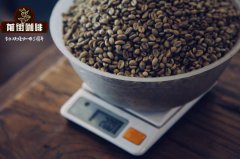
Limu coffee grows in southwestern Ethiopia, ranging from 3600 feet to 6200 feet above sea level. It is a high-quality wet-processed (washed) Ethiopian coffee with relatively low acidity but some sharpness. Coffee in western Ethiopia is usually divided into Limu and Djimmah. Limu is washed and Djimmah is sun-treated.
2020-04-23 Ethiopia Limu producing area introduction coffee flavor how about -
Haller, one of the three major producing areas in Ethiopia | Haller coffee flavor characteristics Harrar
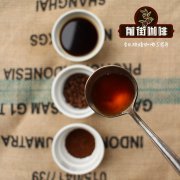
Ethiopian Haller (Harrar) coffee is a wild, exotic Arabica coffee grown in the Oromia region of southern Ethiopia (formerly Haller), between 1400 and 2000 meters above sea level. Haller (Harrar) province is located east of the capital Addis Ababa (Addis Ababa). Altitude: 1510-2120 m varieties: native varieties
2020-04-23 Ethiopia three major producing areas one Haller introduction coffee flavor characteristics -
Introduction of Nakuru producing area in Kenya | how about Kenyan Nakuru coffee Nakuru
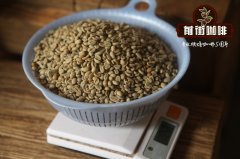
The Nakuru (Nakuru) region, located in central Kenya, has the highest coffee growing area in the region. There is a lot of room for growth in coffee cultivation in this area. At present, it has only nine treatment stations for farmers to bring coffee cherries for processing, which is small compared to other coffee-growing areas (such as Kiambu, which has nearly 100). Part of the reason for this lack of development is the later construction.
2020-04-22 Kenya Naku producing area introduction coffee how Nakuru -
How is the flavor of Kenya PB? kenya kisii is introduced in Kisi, Kenya.
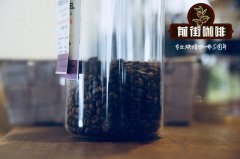
Name: PB Origin, Kenya: elevation: 1700-1950m varieties: blue Mountains, SL-34,SL-28 processing: washing treatment Grade: PB (adzuki bean) Kisi (Kisii) this area is located in southwestern Kenya, not far from Lake Victoria, is a relatively small producing area, most coffee comes from small producers of common cooperatives. Ratio
2020-04-22 Kenya flavor how is it Kisi producing area introduction kenya kisi -
Kenya Kaliluni AA Introduction| Machakos, Kenya Kaliluni AA

Kaliluni AA is produced by many small farmers who are members of the Kaliluni Farmers Cooperative Association and who send coffee to Kaliluni Coffee Factory, Kenya's famous washing plant. The farmers all live in the hills about 60 kilometres south-west of Nairobi. The coffee reputation of the area is not as good as that of nearby Kiambu and Embu, but its high altitude and rolling hills make this soil
2020-04-22 Kenya Kaliluni Introduction Macha Kos How Kalil -
Introduction to the Fairview Manor in Kenya | what is the flavor of the rare manor coffee in Kenya?
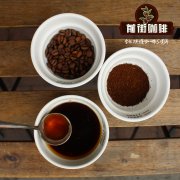
Kiambu is located in the producing area of central Kenya and is dominated by large coffee estates. Coffee from this area is usually named after the place of origin or manor. Usually, Kenyan coffee can only be traced back to the raw bean processing plant at AB (KIAMBU FAIRVIEW ESTATE AB) in Kiambu, Kenya. But the coffee in this producing area is very strong, because it is a product from the manor, consumption
2020-04-22 Kenya Fairview Manor introduction yes coffee flavor in the end how about -
Kenyan Embu Region Introduction| How about Kenya Embu AA Flavor

Embu is located near Mount Kenya. The name of this area comes from Embu City, where about 70% of the population is engaged in small-scale farming. Almost all coffee comes from smallholder farmers, and coffee production in this region is relatively small. However, the area is supported by the Uteuzi Jiimbo project and coffee quality is well developed. Altitude: 1300-1900m Harvest period: May-June and November-December Variety
2020-04-22 Kenya Embu Region Introduction Flavor How about -
Introduction to the producing area of Kilinaga, Kenya | Kenya KirinyagaAA flavor characteristics Kirinyaga

Coffee from the Kirinyaga region of Kenya thrives in rich volcanic soil and is carefully selected and processed in fresh water from the Kii River. Full of sweet complex flavor, lively acidity and rich velvet flavor, a large number of Kirinyaga coffee with a unique local flavor, some people call it the classic Kenyan flavor. The climate here is very similar to summer in Europe.
2020-04-22 Kenya Kili Niya producing area introduction KirinyagaAA Flavor
